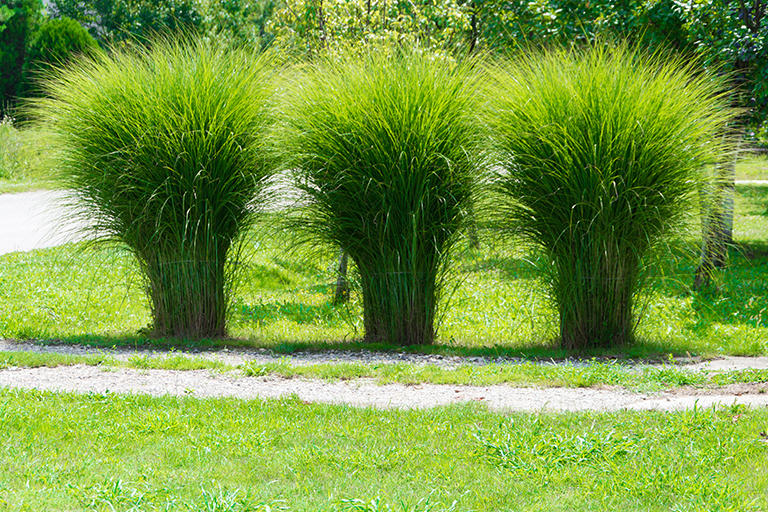By Vicki Spencer, Master Gardner
People used to think the most beautiful yards were made of groomed Kentucky bluegrass bordered by a perfectly edged flower garden. But times have changed. Today, gardeners search the world over for unique ornamental grasses that will add visual interest to their traditional manicured lawns.
In the arid West, native warm season grasses will thrive throughout summer conditions. But with the proper care, you can also grow cool season grasses that flourish in the spring and fall. Furthermore, if you choose native plants, you will have the added benefit of attracting butterflies, birds and bees.
Switchgrass is a fountain-like grass that grows in a variety of soils, though it prefers sandy or loamy soil. It is drought tolerant once it is well-established. Feathery panicles emerge 1 to 2 feet above deep green foliage that turns yellowish in the fall. Switchgrass works well as a border plant or massed together in a rock garden.
Zebra grass is an easy-to-grow clump grass that prefers full sun to partial shade and well-drained soils ranging from sandy to heavy clay. The foliage is famous for its horizontal, zebra-like yellow bands. Silvery plumes grow about 2 feet above the striped foliage. You should leave the leaves standing in winter to protect the crowns. Then, like most grasses, it should be cut to the ground early in the spring before shoots appear.
Sacaton grass is a warm season bunch grass that grows 5 feet tall and about 3 to 4 feet wide. Seed stalks tower above its blue green, arching leaves. It grows vigorously in a variety of soils as long as the soil is well-drained. You can plant it as a border, and it is a popular in Xeriscape grass as it can go as long as a month without watering.
One of my favorites is purple fountain grass with its rich purple, finely textured foliage topped by dark red fuzzy flower spikes. It provides a wonderful contrast to the green-leaved grasses. Unfortunately, it is an annual, so it needs to be replanted each year.
Japanese blood grass is another colorful favorite. It has deep red leaves and is great for borders since it only grows 1 to 1 1/2 feet tall.
If you like flowers, I suggest hardy plume grass, which grows upright in clumps about 5 feet in diameter. Its white, plumed flowers blossom in the fall for added interest.
Squirrel tail (foxtail) barley is an attractive flowering perennial. The flowers develop silky, silver-colored seed heads about 10 to 30 inches high. It grows best in full sun and moist soil, but you need to keep an eye on it because it spreads quickly. You may want to plant it in an isolated area to avoid constant thinning.
A couple of cool season grasses are Feesey ribbon grass and blue fescue. Feesey has variegated white and green striped leaves. It is less aggressive than other ribbon grasses and is great for brightening dark garden areas as it will tolerate light shade. Most of us are familiar with blue fescue, a cool season clump grass with 4- to 8-inch high foliage. Its blue color complements purple-leaved plants.
Pampas grass, which is native to the South American countries of Brazil, Argentina and Chile, became popular in recent years. But you should plant with caution. It grows 8 to 10 feet and its silvery white or pink plumes extend another foot or more in late summer, for a total of up to 11 feet. Even though it is beautiful, it can be overbearing if planted in the wrong spot.
Spring is the best time to plant most grasses, so begin exploring your options right away to get a good start on your ornamental grass garden this year.

